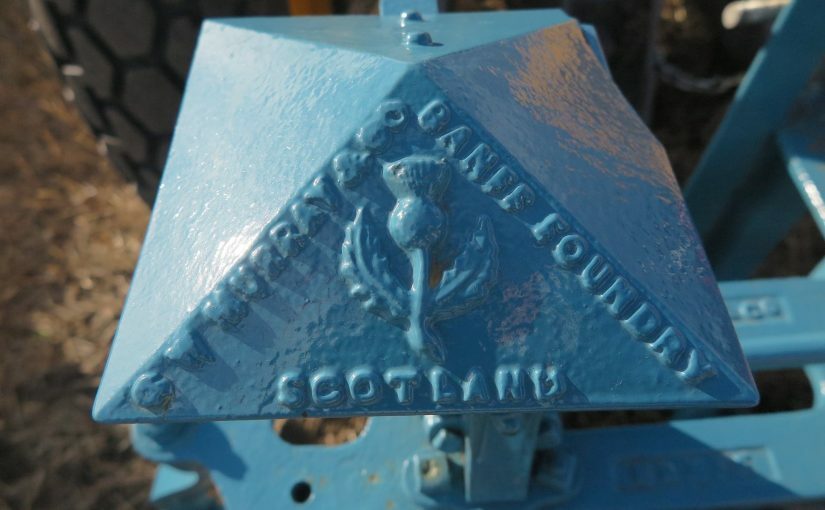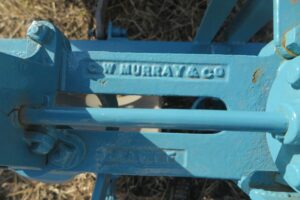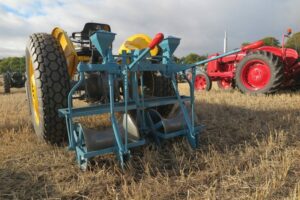Some of the men and women behind the implement and machine makers in Scotland were impressive and innovative figures. One of them was Mr G. A. Duncan, who, for a number of years, was a driving force behind the well-known business of G. W. Murray & Co., Banff. An extensive biography of him was reported in the Peterhead Sentinel of 22 December 1896, a few weeks after it had been published in the Implement and Machinery Review. It is worth quoting at length for the insights into his life and contribution that he made to the business:
“Mr G. A. Duncan, agricultural engineer, Banff
The Implement and Machinery Review of December 2 contains a portrait and appreciative sketch of Mr G. A. Duncan, the sole proprietor of the business which is carried on under the style of G. W. Murray & Co., Banff Foundry. After noticing Mr Duncan’s successful candidature for a seat in the Banff Town Council, the article sketches the career of the enterprising engineer. Having received his school education at Banff and Aberdeen, Mr Duncan entered Aberdeen University, where ill-health alone prevented him from taking his M.A. Degree. Mr Duncan then went to Australia, where he remained for several years. On his return in 1886 the late Mr Murray induced him to undertake the business management of the Banff firm of G. W. Murray & Co., ironfounders, as well as that of the firm of Murray & Blake, iron merchants. Upon the death of Mr Murray, he, at the request of that gentleman’s trustees, continued to occupy the position of manager of his whole business, which he ultimately acquired by purchase. A severe check was brought to Mr Duncan’s prosperity when the entire premises were destroyed by fire in 1892-a loss which insurance did not altogether cover, and amounted to as much as some thousand pounds. Notwithstanding this, however, and the destruction of a large collection of valuable and original patterns, Mr Duncan bore up under the blow, and, setting to work with decision and energy, he in a short time had completed temporary arrangements for carrying on the business, while new works (all remodelled and reconstructed) arose steadily from the ashes of the old. And here, with even better facilities than he previously possessed, Mr Duncan continues, under the style above intimated, to carry on a successful and growing business, whose ramifications are by no means confined to home trade, but reach in many directions beyond the seas/ The firm freely exports large consignments of implements and machinery to the colonies, and especially to Africa, including reaping machines, threshers, turnip sowers, land rollers, iron-shearing machines, and other products. For his business tact and enterprise Mr Duncan is held in high esteem among those who know him.”
The business of G. W. Murray was already in business by 1868. It undertook a range of trades as an agricultural implement maker, iron founder, engineer, mechanical engineer, iron merchant, pump manufacturer and smith.
In 1868 the company sold a wide range of manufactures. These included corn drills, turnip sowing machines, two horse ploughs, drill ploughs, horse rakes, turnip hoeing machines, rick stands, iron troughs, zig zag harrows, grubbers, chain harrows, Norwegian harrows, land rollers, turnip cutters, corn bruisers and potato diggers.The company was an innovative one: in 1895 one trades directory described the company as “G. W. Murray & Co., patentees of potato planters and manufacturers of crown threshers for hand and foot power and also for pony power, Banff.” A patent from 1870 was for “improvements in means of apparatus employed in ploughing or tilling land”. Another from 1871 was for “improvements in apparatus for ploughing or tilling land”. It also entered its implements and machines for the highly prestigious trials of the Highland and Agricultural Society of Scotland. They includes the trials of potato planters in 1883, ploughs (1883), grubbers (1883), implements for autumn cultivation of stubble (1885), and implements for spring cultivation (1885).The company undertook significant publicity work, allowing it to reach a Scotland wide as well as an international market for its manufacturers. It exhibited at the Highland Show from 1868 until 1896. It exhibited in all the Society’s eight show districts, giving it a reach throughout al of Scotland. It advertised in the North British Agriculturist from 1868 until 1897.
The company was highly regarded for its manufactures, winning a number of national and international awards. From the Highland and Agricultural Society of Scotland it received a commendation for fencing in 1868, a silver medal for a collection of ploughs in 1870, a medium silver medal for a collection in 1872. a silver medal for a chain pump in 1873, a medium silver medal for a turnip sower in 1875, a medium silver medal for a turnip sower in 1876, a silver medal for a thrashing machine in 1876, a minor silver medal for collection in 1876, and a first and second prize for a turnip lifter in 1881.
The company was one for the few Scottish companies to have received an award from the Royal Agricultural Society of England – for a double furrow plough in 1870. In 1872 it was awarded a first prize of 10L for a double furrow plough not exceeding 3.5cwt a highly commended for a double mouldboard or ridging plough not exceeding 2.5cwt. In 1874 it was awarded second prize of 5L for drill,. without manure box, for turnips and other roots on the ridge. In 1880 it received a silver medal for a two row potato planter.


